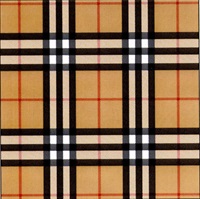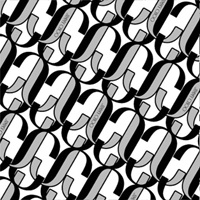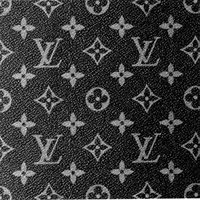With face masks or "coverings" now compulsory in most public indoor settings in the UK, they have swiftly become part of our everyday lives – and outfits. It was therefore perhaps inevitable that counterfeit or otherwise unauthorised designer face coverings would start appearing on the marketplace. These products can be damaging to the exclusivity of designer brands, particularly due to their prominent positioning on the face.
There are two types of unauthorised designer face coverings which brands are likely to encounter. The first are counterfeits; straightforward "fakes" which are copied directly from a well-known designer print – some iconic examples being the Burberry check and the Louis Vuitton monogram. The global market for counterfeit goods is vast (3.3% of all trade worldwide according to a 2019 OECD and EUIPO joint report), and it is likely that many, if not most counterfeit face coverings, are manufactured and sold by experienced counterfeiters with established trade channels who have simply expanded into a new product line.
The second type of unauthorised face coverings are those made from genuine repurposed fabric. This could be a designer scarf, a coat lining, or even designer fabric sold for the purpose of home furnishings. These are not "counterfeit" per se as the underlying material is genuine – however that is not to say that they are legitimate, or that brand owners can't do anything to stop their sale.
Is it infringing?
Establishing infringement is more straightforward for counterfeits than it is for repurposed goods. Many counterfeits are sold so as to deceive the consumer as to their authenticity, with increasingly deceptive labels and swing tickets. Major brands inevitably have trade mark protection for their brand name, and so it is relatively straightforward to establish that these counterfeit goods are unauthorised by reference to the use of this name on the labels, without the need to examine the goods themselves.
However counterfeits are increasingly sold as "imitation"; the product itself clearly embodies a well-known print or pattern, but is sold without the associated brand insignia or any labels, and the purchaser knows that what they're buying is not authentic. For these counterfeit face coverings where the brand name is not present, it is necessary to look to the goods themselves (i.e. the pattern/print) to establish infringement. The available options are:
- Copyright: but this requires proof of subsistence – not all older brands will have all the necessary records, and may be outside the term of protection.
- Registered designs: however the maximum term of protection is 25 years, and even major brands don't always have design protection for their iconic patterns due to the requirement that the design is filed within one year of first public disclosure.
- Unregistered design rights: however for Unregistered Community Design Rights (UCDR) the maximum term of protection is only three years from first public disclosure of the design, so this won't be an option for iconic designs which have typically been on the market for much longer (and Brexit poses increased complications for relying upon UCDR). UK Unregistered Design Rights don't protect surface decoration (i.e. patterns).
- Trade mark infringement: a handful of well-known brands have secured trade mark registration for iconic patterns and prints associated with their brands (examples below). Such trade marks are powerful tools against counterfeits, because any product that embodies the print or pattern is arguably infringing, even when the brand name does not appear and the brand doesn't itself make an equivalent product.
|
Burberry
EUTM No. 002701498
|
Jimmy Choo
IR No. 1521309
|
Louis Vuitton
EUTM No. 000015602
|
 |
 |
 |
For repurposed face coverings, establishing infringement is less straightforward. Brand owners are unable to prevent the re-sale of genuine products as second hand goods (such as re-selling a tired designer handbag on eBay); at the point they place those goods on the European Economic Area (EEA) market legitimately, their trade mark and design rights in the relevant market are "exhausted" in the EEA. Equally, brands cannot prevent individuals from creating their own repurposed face-coverings from genuine articles (provided that they are not doing so commercially and assuming that the genuine articles were originally placed on the relevant market legitimately).
However, there is an exception to trade mark exhaustion in the EEA, which allows brand owners to prevent the further commercialisation of genuine goods where there is a "legitimate reason" and specifically where "the condition of the goods is changed or impaired". Provided that the face covering incorporates a registered trade mark (which could be a brand name or logo, or a pattern mark) then brand owners should be able to challenge the sale of face coverings made from repurposed genuine fabric on the basis that the condition of the original goods has materially changed.
For brands that may need to rely on registered designs, there is no equivalent exhaustion exemption in the Community Design Regulation, although it may be arguable that an equivalent provision is implied. For copyright, it is arguable that repurposing the original fabric may infringe the reproduction right or distribution right of the copyright owner; however the position is not clear-cut and brand owners should rely preferably upon trade marks or alternatively registered design protection where possible.
How to prevent the supply and sale of counterfeit or repurposed face coverings
Most major brands will have established brand protection programmes in place, and a combined approach of tackling physical supply routes and both physical and online sales routes will achieve optimum results. For example:
- Working closely with Customs Authorities and ensure that appropriate applications for action (AFAs) are in place (noting that AFA coverage for the UK/EU should be reviewed in advance of the end of the Brexit transition period on 31 December 2020 as additional coverage is likely to be required, depending upon where existing AFAs were filed).
- Working closely with Trading Standards, and offering training on brand identifiers and ways of identifying unauthorised goods.
- Online enforcement, to include monitoring activity and notice and take down requests to third party online marketplaces such as Amazon, eBay and Etsy.
Embrace the trend
Many designers have accepted that face coverings are likely to be around for some time and that there is a growing consumer market for them. However this needs to be carefully balanced against the risk of being perceived to be profiting from the crisis, and some brands are electing to publicly donate a proportion of profits to COVID-19 related charities.